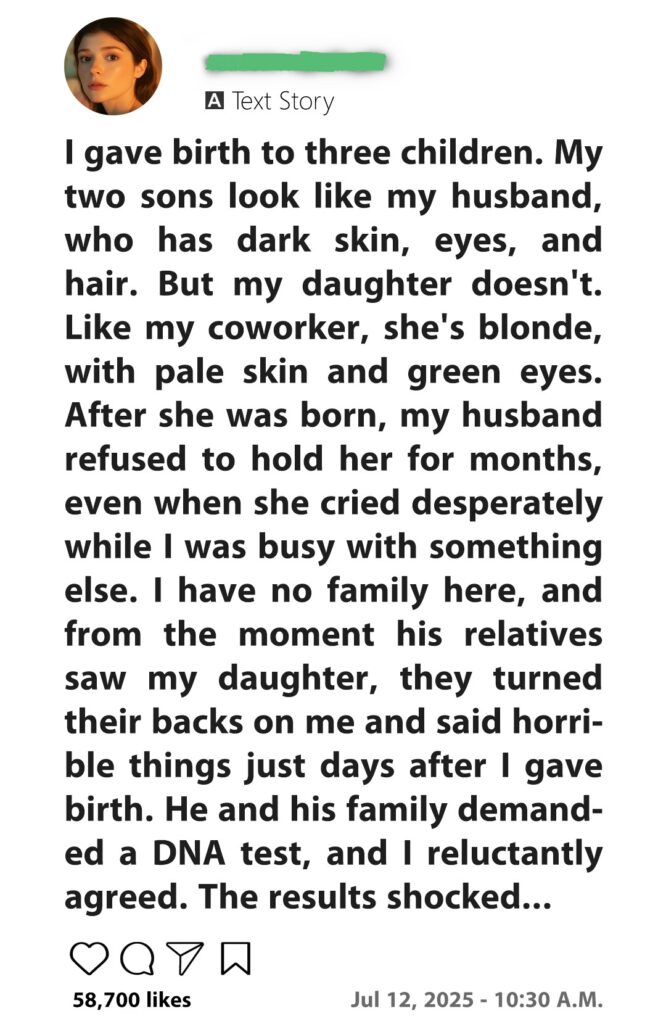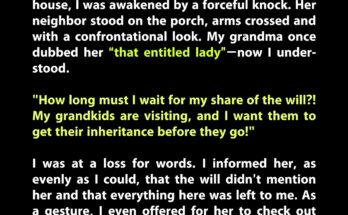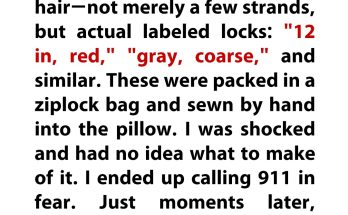When a dark-skinned father welcomed his fourth child—a pale-skinned baby girl with platinum blonde hair and green eyes—he recoiled. She looked nothing like him or his three sons. Suspicion crept in. His wife had once been close to a friendly older coworker, and the resemblance between the baby and that man was uncanny. The father demanded a DNA test. His wife, devastated, refused at first. She insisted the baby resembled her great-grandparents. But the man wouldn’t relent.
The tension shattered their home. He refused to hold the baby. His family turned cold, treating the child like an outsider. At a birthday party, the grandmother excluded the baby from the grandchildren’s photo. The mother, humiliated and heartbroken, finally agreed to the test.
The results? The child was his.
The revelation hit like a tidal wave. The father broke down, holding his daughter for the first time, sobbing with guilt. He apologized, again and again. But the damage was done. His wife gave him a choice: move to her home country and start fresh—or face divorce. He chose to fight for their family.
They began therapy. He tried to rebuild trust. But she drew a line: his family, who had treated her and their daughter with cruelty, would no longer be part of their lives.

This wasn’t just a story about doubt—it was about the cost of broken trust, the pain of prejudice, and the strength it takes to forgive. The mother didn’t forget, but she chose to heal. And in doing so, she reclaimed her dignity, her daughter’s place in the family, and the power to decide what love should look like.


